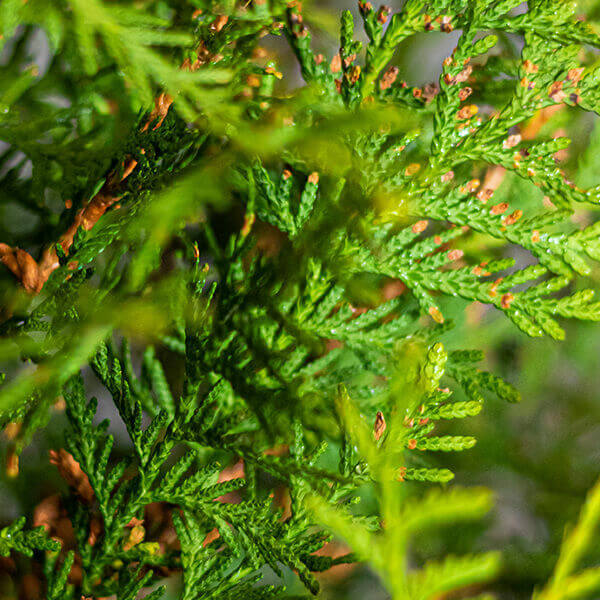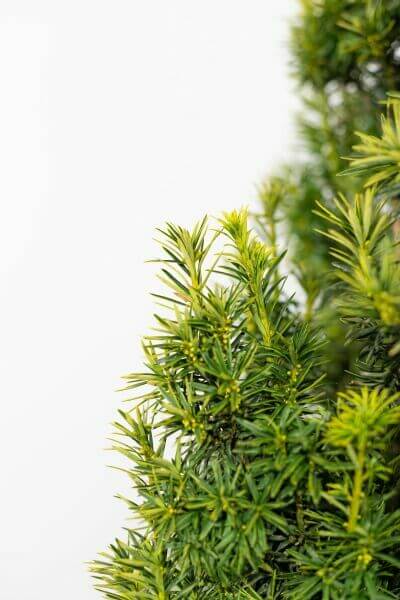Best Hedging Plants For Boundary Marking
Best Hedging Plants For Boundary Marking
Blog Article
Hedge Plants For Classic Borders
Enhance your garden's appeal with lush hedge ranges such as Yew (Taxus), Thuja, Laurel, Photinia, and Bamboo, celebrated for their structural stability and environmental advantages.
Yew and Thuja provide evergreen coverage and winter season durability, while Laurel uses rapid growth and broad, aromatic leaves.
Photinia adds seasonal appeal with its dynamic red foliage, and Bamboo provides a low-maintenance, serene atmosphere.
These hedges enhance air quality, decrease sound, and create tranquil, personal areas.
Appropriate planting, spacing, and upkeep ensure vigorous development and eco-friendly harmony.
Explore how these rich varieties can elevate your garden's appeal and wellness.
Key Takeaways
Transform Your Garden With Lush Hedge Varieties
- Select Yew for its dense, evergreen development and exceptional longevity.
- Select Laurel for its quick growth and broad leaves, making sure fast privacy.
- Pick Photinia for its dynamic seasonal foliage, which turns a striking dark red.
- Make use of Bamboo for a low-maintenance, winter-hardy hedge with visual appeal.
- Space plants 2-3 per meter and prune frequently for optimum development and health.
Popular Hedge Plants
When changing a garden with lush hedge ranges, it's important to consider popular hedge plants such as Yew, Thuja, Laurel, and Photinia due to their distinct qualities and advantages.
Yew (Taxus) is extremely respected for its durability and thick, green development, making it a prime option for sustaining landscapes.
Thuja is kept in mind for its evergreen foliage and robust winter season strength.
Photinia adds seasonal vibrancy with red leaves that darken gradually, developing vibrant visual appeal.
Laurel uses rapid growth and fragrant, broad leaves, suitable for quick privacy.
Additionally, Bamboo is an outstanding choice for ambiance, offering a low-maintenance, winter-hardy option that improves the garden's aesthetic with its elegant, swaying canes.
These selections accommodate a range of horticultural needs and choices.
Benefits of Garden Hedges
Garden hedges use a wide variety of benefits, making them a valuable addition to any landscape. These natural barriers are economical to implement and provide substantial wind protection, boosting air flow and contributing to noise reduction. The thick foliage of hedges like Thuja and Beech guarantees privacy by blocking exposure, developing a peaceful and secluded environment.
Hedges also play a crucial function in microclimate regulation, supplying a stable environment that cultivates plant growth and decreases temperature fluctuations. Their complex leaf structures filter toxins, improving air quality and adding to a healthier garden community.
Moreover, hedges excel in sound reduction, soaking up and deflecting sound waves to lower ambient noise levels. This dual performance of providing both acoustic and visual privacy boosts the overall harmony and aesthetic appeal of any garden.
Planting and Maintenance Tips
For an effective hedge, meticulous preparation of the planting location is important. Ensure the soil has appropriate pH and drain to support strong root advancement.
Space the plants properly for the selected types. Water the hedge frequently during its preliminary growth phase, adjusting as required with seasonal modifications.
Implement a organized pest control and disease prevention technique, using chemical or organic treatments when essential. Regularly inspect for aphids, termites, and fungal infections.
Apply mulch to keep wetness and suppress weeds. Seasonal pruning promotes thick development and air flow, vital for plant health.
Following these guidelines will assist you cultivate a lively, properly maintained hedge that improves the charm of your garden.
Spacing and Trimming Standards
Spacing and Trimming Guidelines
Proper spacing and trimming are vital for cultivating healthy, visually appealing hedges. Sufficient spacing ensures each plant receives enough nutrients, light, and air flow.
Follow these standards for optimum hedge upkeep:
- Spacing: Position hedge plants 2-3 plants per meter to encourage robust growth.
- Pruning Strategies: Routine pruning is essential for preserving preferred hedge height and shape. Trim new development in summer season and cut back older wood during winter.
- Seasonal Care: Adjust cutting approaches and schedules according to seasonal requirements to make sure plant health.
- Hedge Height: Frequently screen and trim to maintain the desired hedge height and attain consistent aesthetic appeals.
Following these steps will guarantee your hedge prospers, enhancing both the appeal and performance of your garden.
Picking the Right Hedge
Picking the Right Hedge
Selecting the proper hedge involves examining elements such as mature height, foliage density, and ecological resilience. Effective hedge plant choice requires understanding each species' growth characteristics and site-specific versatility.
For instance, Yew (Taxus) offers excellent longevity and thick development, while Thuja is notable for its winter resilience. Additionally, thinking about upkeep requirements is essential; fast-growing types like Laurel or Privet demand regular cutting, whereas low-maintenance alternatives like Bamboo or Ivy may be preferable for those seeking very little maintenance.
Environmental aspects such as soil type, light availability, and wetness conditions need to also guide the selection process. This mindful technique guarantees the chosen hedges will thrive, supplying both visual and functional advantages to the garden landscape.
Shipment and Planting Recommendations
To ensure your hedge plants prosper, they ought to be provided by specialized couriers and planted quickly upon arrival.
Follow these necessary steps for successful planting:
- Soil Preparation: Enhance the soil with raw material to enhance drain and nutrient material.
- Planting Depth: Produce a trench twice the width and equal to the depth of the root ball.
- Watering Methods: Water thoroughly after planting, keeping the soil consistently damp however not filled.
- Mulching: Apply a layer of mulch to keep wetness and reduce weeds.
Consumer Assistance and Service
Offered the essential role of timely help in horticultural pursuits, our customer support team is available six days a week through telephone, email, and social networks to provide skilled suggestions and promptly address any concerns. Their dedication to quick response times ensures customer complete satisfaction by dealing with inquiries associated with plant health, ideal planting techniques, and maintenance schedules.

Availability
-------------------
Within 24 hours
Within 2 days
Within 24 hours
This extensive support group, enhanced by an excellent 9.3/ 10 consumer ranking, highlights our dedication to enhancing the gardening experience for every client.
Frequently Asked Questions
How Long Does It Take for Hedge Plants to Establish?
Hedge plants typically require one to three years to become fully developed, with the exact period differing by types and growing conditions.
Reliable care throughout this vital period is vital for robust development. Consistent watering, watchful weed control, and appropriate fertilizer application are pivotal in promoting strong root advancement.
For example, fast-growing species like hedge plants Laurel may establish faster, while slower-growing varieties such as Yew may take longer. Thorough maintenance accelerates the establishment process, leading to thick and healthy hedges.
What Are the Finest Hedge Plants for Personal Privacy?
The concern of the very best hedge plants for privacy includes examining evergreen and deciduous choices.
Evergreen hedges like Thuja, Laurel, and Cypress supply year-round protection, ensuring constant privacy.
In contrast, deciduous hedges such as Beech offer seasonal personal privacy, shedding leaves in colder months.
Secret maintenance ideas for personal privacy hedges include routine trimming, fertilizing in spring, and appropriate spacing-- usually 2 to 3 plants per meter.
Furthermore, constant watering and persistent weed elimination are essential for promoting healthy, dense growth.
Can Hedge Plants Attract Wildlife to My Garden?
Yes, hedge plants can draw in wildlife to your garden by offering important benefits like shelter, food, and nesting websites, consequently enhancing regional biodiversity. For instance, yew, holly, and laurel are excellent for drawing in birds, while ivy supports a variety of pests.
Nevertheless, it's crucial to note that there are some downsides, such as increased maintenance to manage pests and routine upkeep. Thoroughly choosing and preserving hedge ranges can assist balance these disadvantages and benefits, ultimately cultivating a sustainable and lively community in your garden.
Are There Any Flowering Hedge Plants Available?
Yes, there are flowering hedge plants available that can improve the charm of your garden.
For instance, Elaeagnus, also referred to as Olive Willow, produces fragrant white flowers in the fall, including a touch of beauty.
Photinia, another popular option, showcases lively red leaves that develop into an abundant green, producing a dynamic visual result throughout the seasons.
To ensure these plants grow, it's necessary to practice appropriate pruning methods and seasonal upkeep, such as cutting new growth in the summer and cutting down in the winter season.
These measures will assist maintain the health and visual appeal of your flowering hedges.
How Do I Prevent Pests in My Hedge Plants?
To avoid pests in hedge plants, utilize natural pest control techniques and keep appropriate hedge care. Introduce beneficial bugs like ladybugs, which victimize hazardous insects, to produce a balanced environment.
Frequently examine your hedges for indications of problem and quickly remove any affected parts to prevent the spread. Ensure the health of your hedges by using well balanced fertilizers and supplying sufficient water.
Utilize mulching to retain soil moisture and proper spacing to decrease plant stress and promote robust growth. These practices jointly assist in decreasing bug issues and maintaining a healthy hedge.
Conclusion
In essence, picking the ideal hedge varieties such as Yew, Thuja, and Laurel can transform any garden into a tranquil haven. These plants offer year-round greenery, enhance visual appeal, and deal useful benefits like sound reduction and wind defense.
Correct planting methods, accurate spacing, constant watering, and seasonal cutting are vital for ideal growth.
Dependable delivery services and skilled client assistance guarantee a seamless experience from purchase to planting, making it easier than ever to elevate your outdoor space.
Garden hedges provide a wide variety of benefits, making them an important addition to any landscape. These natural barriers are affordable to carry out and provide substantial wind protection, boosting air circulation and contributing to sound reduction. The thick foliage of hedges like Thuja and Beech ensures privacy by obstructing visibility, developing a serene and remote environment.

Pruning Techniques: Routine pruning is necessary for preserving desired hedge height and shape. Cut brand-new growth in summer and cut back older wood throughout winter.
Report this page